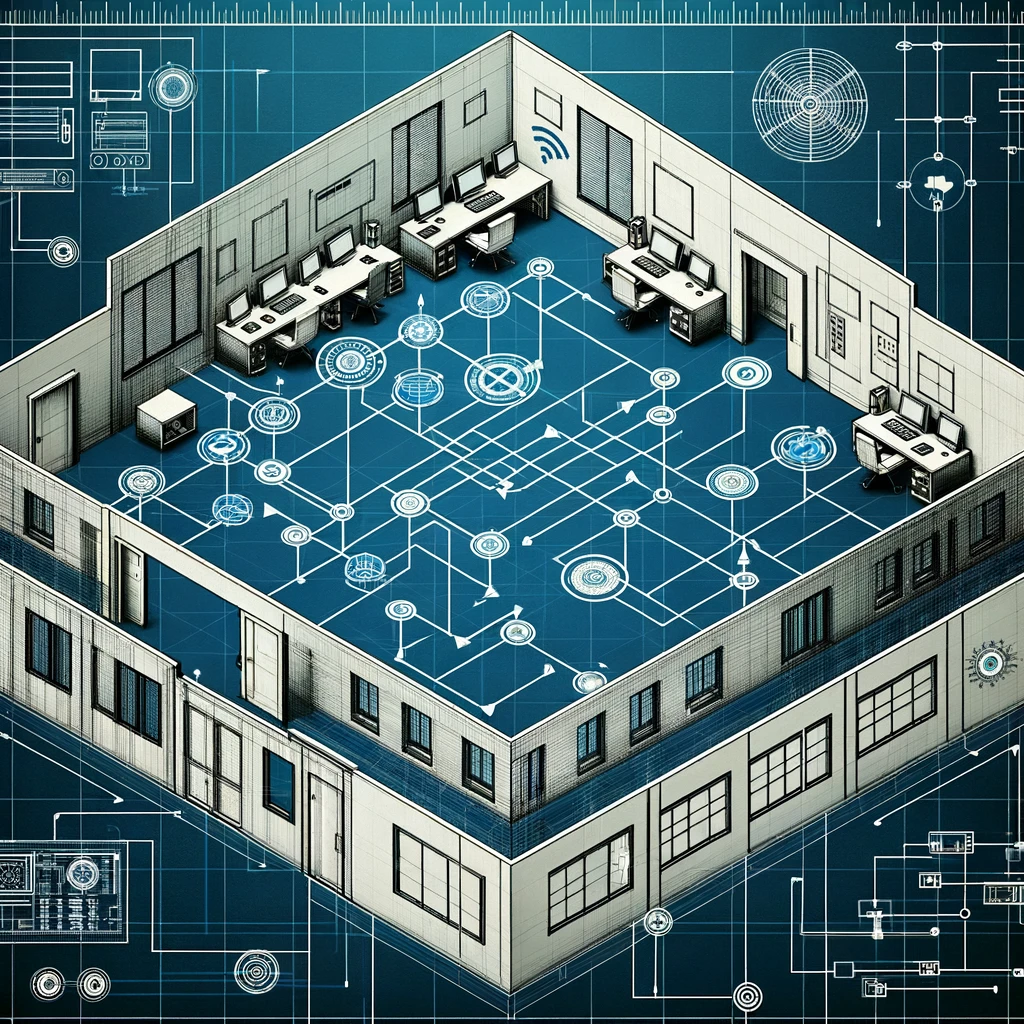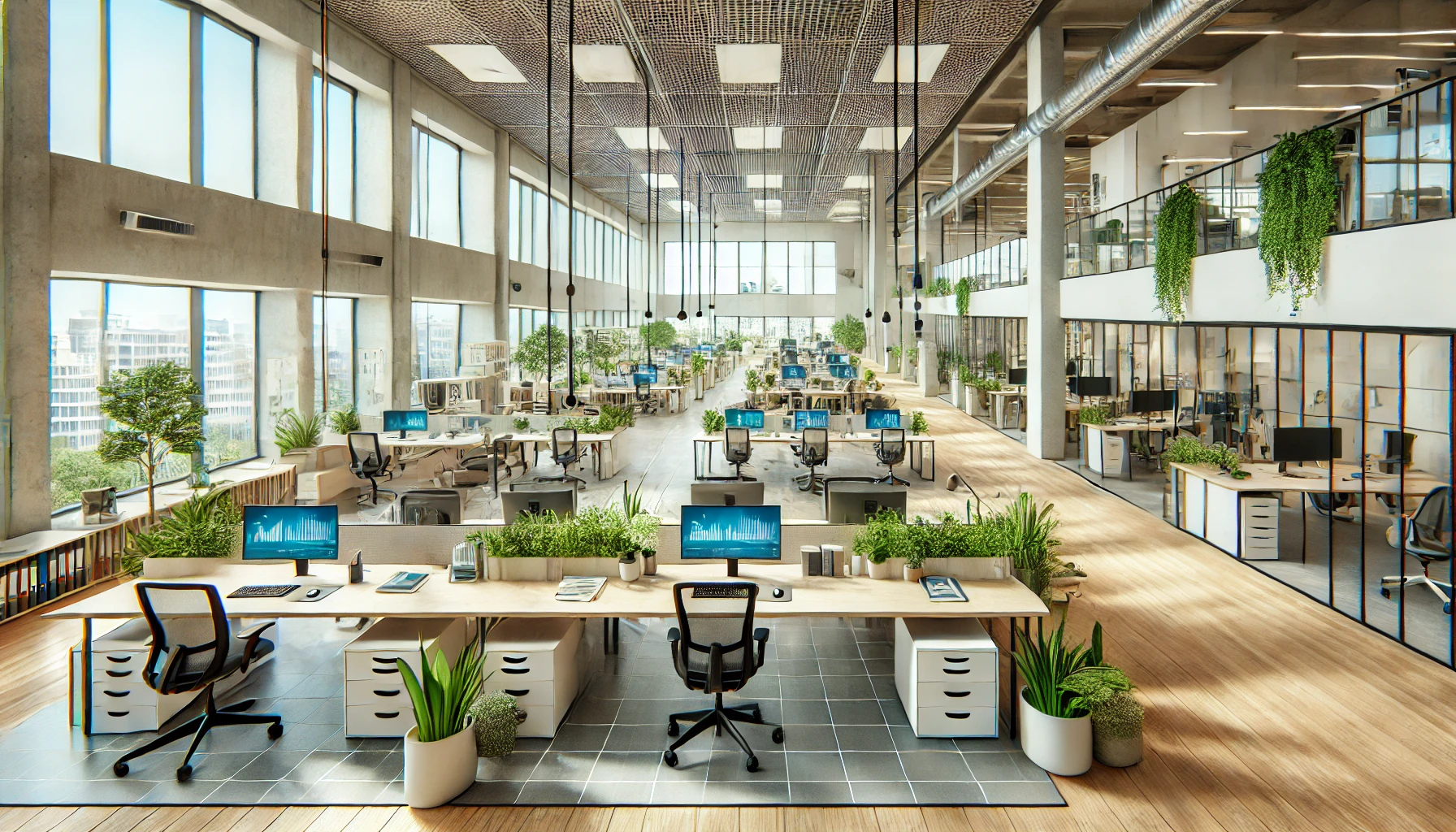Smart office with sensors: These are the benefits

The more modern the office, the better the technical equipment. Smart offices go one step further: By using tools and network structures, a room becomes an intelligent environment that promotes productivity, efficiency and comfort in everyday working life. One of the main components of smart offices are sensors that record a wide range of data. So which sensor types are suitable for a smart office – and what benefits do they bring? ReCoTech provides an overview.
The basics: What is a smart office?
Smart offices use various technologies to analyze rooms and employees’ working behavior. The levels that play a role in smart offices are complex: On the one hand, the term includes digital infrastructures that enable location-independent working from home or remotely.
On the other hand, the focus is on traditional office complexes. For example, smart offices anonymously record how many people are in a certain area – in combination with parameters such as room temperature, volume or air quality.
A smart office concept therefore focuses on four aspects:
- Improved workflows through to automated processes
- Optimal use of space
- Flexible and adaptable workspaces
- Health and well-being of employees
To cover these points, smart offices rely on a variety of technologies. These range from meeting tools, the Internet of Things (IoT) and machine learning to digital locking systems that allow access to the office via an app. This is also where sensor technology comes into play: Depending on the type, sensors record various data values and thus form the basis for an efficient, flexible and comfortable working environment. ReCoTech presents the most important sensor types for a smart office.
In practice: Areas of application for sensors in the smart office
There are different ways of grouping the various sensor types. In the smart office, the consideration is: Which dimensions of the office provide the necessary data to make work processes more efficient and create environments that promote productivity? This results in the following categories:
- Room sensors
- Motion sensors
- Desk sensors
- Contact sensors
- Floor sensors
1. Room sensors
One of the largest groups of sensors that are part of the equipment of a smart office: Room sensors register parameters that you can’t see – such as the humidity or air quality in the office. Temperature sensors in particular are crucial for improving the energy efficiency of a building.
| For example:
In Germany, the Committee for Workplaces (ASTA) of the Federal Ministry of Labor and Social Affairs (BMAS) specifies an air temperature of at least 18 °C to 19 °C for sedentary activities such as office work – many offices agree on 20 °C. Intelligent climate sensors detect whether the room temperature is within this range. Is it getting too warm in the office? If the sensor technology is networked with the heating system, the sensor can pass on the information directly and activate the cooling system or switch off the heating. |
Another type of room sensor that is particularly useful for open-plan offices and conference rooms are audio sensors. They measure the volume of the work surface and emit so-called white noise above a certain decibel level: The barely audible sound dampens the background noise and can therefore improve the ability to concentrate.
2. Motion sensors
A big plus for space optimization: Motion sensors, such as infrared or ceiling sensors, register the routes taken by employees in the office. The data can be used to create heat maps that reveal which areas are well utilized and whether there are any free spaces. One advantage is that movement sensors can also record and evaluate spaces that are not integrated into a workplace booking system – such as break rooms.
The energy balance of a building also benefits from motion sensors if they are connected to the lighting system: If a sensor detects a person entering the room, it automatically switches the lighting on – or off as soon as no more movement is registered. This avoids unnecessary power consumption.
3. Table sensors
Desk sensors are a useful addition for smart offices that use a workstation model such as desk sharing or hot desking. As soon as a person selects or releases a desk, the sensor can forward the information to a workplace booking tool. In this way, the technology supports workplace management and enhances bookings via software with real-time data.
Desk sensors can also help with the employee health factor: Anyone who sits for too long receives a reminder from the sensor via a color signal or an app notification – a technical solution to encourage employees to be more active in the office.
4. Contact sensor
Contact sensors help to increase safety in the office. Window frames are a common area of application: Here, sensors can check whether a window is still open at the end of working hours. If the sensor is connected to an appropriate mechanism, the window closes itself if necessary and reduces the risk of a break-in. At the same time, this ensures that the temperature in the interior does not drop too low at night – a clear advantage regarding energy management.
5. Floor sensors
Parking spaces with floor sensors can also be part of a smart office. The functional principle is comparable to a desk sensor at the workplace: If a vehicle drives into a parking bay, the sensor sends the information to the booking software and marks the parking space as “occupied”. Charging times for electric cars can also be mapped digitally and in real time using floor sensors.
The bottom line: Using the full smart office potential with sensors
The benefits are obvious: Sensors provide the technical support to turn traditional offices into modern smart offices. The numerous functions enable automated processes, increase employee satisfaction and have a positive effect on the energy balance of office buildings.
The potential of sensor data becomes particularly clear in combination with the ReCoTech tools for area planning and workplace booking: Real-time analyses provide information on space utilization and thus represent a profitable extension to booking software. In this way, sensors provide transparent arguments that promote space optimization.
Would you like to take the next step towards the future? ReCoTech can help you transform your office into a smart office.
These articles might also interest you

New Partnership with the City of Böblingen: A Step Towards the Future
We are excited to announce the official partnership between ReCoTech and the City of Böblingen! This collaboration marks a significant ...

GEFMA 130-1 Sets New Standards for Sustainable and Efficient Space Utilization in Real Estate
Space management is a crucial aspect of real estate operations. It encompasses all activities related to the planning, use, and ...
New customer for ReCoTech: Welcome to STADT UND LAND
We are delighted to announce that ReCoTech has gained another significant client: STADT UND LAND Wohnbauten-Gesellschaft mbH. Our innovative workspace ...

